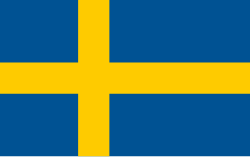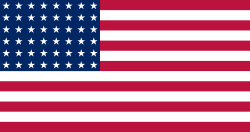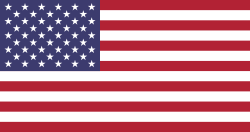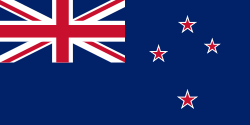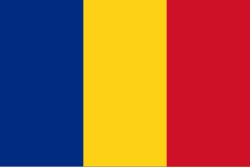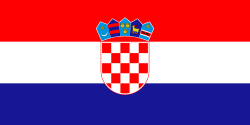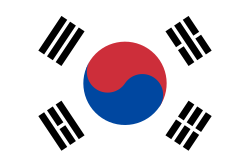Liste der Wimbledonsieger (Junioreneinzel)
Diese Liste enthält alle Finalisten im Junioreneinzel bei den Wimbledon Championships. Das Event wurde 1947 das erste Mal ausgespielt. Bisher gelang es vier Spielern nach dem Titelgewinn bei den Junioren auch den Titel auf der Profi-Tour zu gewinnen: Björn Borg (1972 und 1976–1980), Pat Cash (1982 und 1987), Stefan Edberg (1983 und 1988, 1990) sowie Roger Federer (1998 und 2003–2007, 2009, 2012, 2017). Mehrmals gewinnen konnten die Spieler den Titel chronologisch und jeweils zweimal in Folge Staffan Stockenberg, Wladimir Korotkow, Byron Bertram, Billy Martin.
| Jahr | Sieger | Finalgegner | Ergebnis |
|---|---|---|---|
| 1947 | 8:6, 6:1, 9:7 | ||
| 1948 | 6:0, 6:8, 5:7, 6:4, 6:2 | ||
| 1949 | 6:2, 6:1 | ||
| 1950 | 6:0, 6:2 | ||
| 1951 | 8:6, 6:4 | ||
| 1952 | 6:3, 6:3 | ||
| 1953 | 7:5, 6:4 | ||
| 1954 | 6:2, 7:5 | ||
| 1955 | 6:0, 11:9 | ||
| 1956 | 6:1, 6:1 | ||
| 1957 | 6:2, 6:1 | ||
| 1958 | 6:1, 6:3 | ||
| 1959 | 6:2, 6:4 | ||
| 1960 | 1:6, 8:6, 6:4 | ||
| 1961 | 6:3, 9:7 | ||
| 1962 | 6:2, 6:4 | ||
| 1963 | 6:3, 6:3 | ||
| 1964 | 6:2, 6:3 | ||
| 1965 | 6:2, 3:6, 6:2 | ||
| 1966 | 6:3, 11:9 | ||
| 1967 | 6:2, 6:0 | ||
| 1968 | 6:1, 6:2 | ||
| Beginn der Open Era | |||
| 1969 | 7:5, 5:7, 6:4 | ||
| 1970 | 6:0, 6:3 | ||
| 1971 | 2:6, 6:4, 6:3 | ||
| 1972 | 6:3, 4:6, 7:5 | ||
| 1973 | 6:2, 6:4 | ||
| 1974 | 6:2, 6:1 | ||
| 1975 | 6:1, 6:4 | ||
| 1976 | 6:4, 7:5 | ||
| 1977 | 6:1, 1:6, 8:6 | ||
| 1978 | 6:3, 6:4 | ||
| 1979 | 6:0, 6:2 | ||
| 1980 | 6:4, 3:6, 6:4 | ||
| 1981 | 7:6, 7:5 | ||
| 1982 | 6:4, 6:7, 6:3 | ||
| 1983 | 6:3, 7:6 | ||
| 1984 | 6:4, 4:6, 6:3 | ||
| 1985 | 6:4, 6:4 | ||
| 1986 | 6:3, 7:5 | ||
| 1987 | 7:6, 6:4 | ||
| 1988 | 7:6, 6:2 | ||
| 1989 | 6:4, 6:3 | ||
| 1990 | 7:5, 2:6, 6:4 | ||
| 1991 | 6:4, 6:3 | ||
| 1992 | 6:4, 6:3 | ||
| 1993 | 6:1, 6:3 | ||
| 1994 | 7:6, 3:6, 6:4 | ||
| 1995 | 6:2, 6:2 | ||
| 1996 | 3:6, 6:2, 6:3 | ||
| 1997 | 6:3, 7:6 | ||
| 1998 | 6:4, 6:4 | ||
| 1999 | 7:6, 6:3 | ||
| 2000 | 3:6, 6:3, 7:5 | ||
| 2001 | 3:6, 7:5, 6:3 | ||
| 2002 | 7:5, 6:4 | ||
| 2003 | 6:2, 7:6 | ||
| 2004 | 7:5, 7:6 | ||
| 2005 | 6:4, 6:3 | ||
| 2006 | 6:2, 7:64 | ||
| 2007 | 7:5, 6:1 | ||
| 2008 | 7:5, 6:3 | ||
| 2009 | 4:6, 6:2, 6:2 | ||
| 2010 | 6:4, 6:4 | ||
| 2011 | 2:6, 6:4, 6:2 | ||
| 2012 | 7:5, 6:4 | ||
| 2013 | 7:5, 7:62 | ||
| 2014 | 6:4, 4:6, 6:3 | ||
| 2015 | 7:65, 6:4 | ||
| 2016 | 4:6, 6:1, 6:3 | ||
| 2017 | 7:62, 6:3 | ||
| 2018 | 6:1, 6:72, 6:4 | ||
| 2019 | 6:3, 6:2 | ||
| 2020 | ausgefallen, COVID-19-Pandemie | ||
| 2021 | 7:5, 6:3 | ||
| 2022 | 7:62, 7:63 | ||
| 2023 | 6:4, 6:4 | ||
| 2024 | 6:3, 6:3 | ||
| 2025 | 6:2, 6:3 | ||
Weblinks
Auf dieser Seite verwendete Medien
Flag of Hungary from mid/late 1946 to 20 August 1949 and from 12 November 1956 to 23 May 1957.
Flagge des Vereinigten Königreichs in der Proportion 3:5, ausschließlich an Land verwendet. Auf See beträgt das richtige Verhältnis 1:2.
Flagge des Vereinigten Königreichs in der Proportion 3:5, ausschließlich an Land verwendet. Auf See beträgt das richtige Verhältnis 1:2.
Flag of South Africa, used between 1928 and 1982. It is identical to the 1982 to 1994 version except that the shade of blue is darker. It is also known as the "Oranje-Blanje-Blou".
Flag of Australia, when congruence with this colour chart is required (i.e. when a "less bright" version is needed).
See Flag of Australia.svg for main file information.US Flag with 48 stars. In use for 47 years from July 4, 1912, to July 3, 1959.
(c) I, Cmapm, CC BY-SA 3.0
The flag of the Soviet Union (1955-1991) using a darker shade of red.
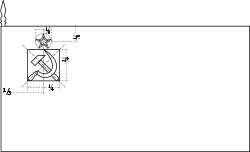
(c) I, Cmapm, CC BY-SA 3.0
The flag of the Soviet Union (1955-1991) using a darker shade of red.

Flagge Österreichs mit dem Rot in den österreichischen Staatsfarben, das offiziell beim österreichischen Bundesheer in der Charakteristik „Pantone 032 C“ angeordnet war (seit Mai 2018 angeordnet in der Charakteristik „Pantone 186 C“).
Flag of Syria. Originally flag of the Syria Revolution (from 2011), de facto flag of Syria beginning December 2024, official beginning March 2025.
Autor/Urheber: SanchoPanzaXXI, Lizenz: CC BY-SA 4.0
Flag of Spain during the Spanish State. It was adopted on 11 October 1945 with Reglamento de Banderas Insignias y Distintivos (Flags, Ensigns and Coats of Arms Bill)
Autor/Urheber: SanchoPanzaXXI, Lizenz: CC BY-SA 4.0
Flag of Spain during the Spanish State. It was adopted on 11 October 1945 with Reglamento de Banderas Insignias y Distintivos (Flags, Ensigns and Coats of Arms Bill)
Die quadratische Nationalfahne der Schweiz, in transparentem rechteckigem (2:3) Feld.
Verwendete Farbe: National flag | South African Government and Pantone Color Picker
| Grün | gerendert als RGB 0 119 73 | Pantone 3415 C |
| Gelb | gerendert als RGB 255 184 28 | Pantone 1235 C |
| Rot | gerendert als RGB 224 60 49 | Pantone 179 C |
| Blau | gerendert als RGB 0 20 137 | Pantone Reflex Blue C |
| Weiß | gerendert als RGB 255 255 255 | |
| Schwarz | gerendert als RGB 0 0 0 |
Flag of Belarus 1995-2012
Das Bild dieser Flagge lässt sich leicht mit einem Rahmen versehen
Flag of Canada introduced in 1965, using Pantone colours. This design replaced the Canadian Red Ensign design.
Chinese Taipei Olympic Flag. According to the official website of Chinese Taipei Olympic Committee, Blue Sky(circle) & White Sun(triangles) above the Olympic rings is neither the National Emblem of the Republic of China, nor the Party Emblem of Kuomintang (KMT), but a design in between, where the triangles do not extend to the edge of the blue circle, as registered at International Olympic Committee in 1981 and digitally rendered in 2013. Besides, the blue outline of the five-petaled plum blossom is broader than the red one. Moreover, the CMYK code of the blue one and the Blue Sky & White Sun is "C100-M100-Y0-K0", and different from the Olympic rings (C100-M25-Y0-K0). Note that it's the only version recognized by IOC.
blank svg image, same dimensions as typical flag icon with no border (24x16px)
Pictograms of Olympic sports - Tennis. This is unofficial sample picture. Images of official Olympic pictograms for 1948 Summer Olympics and all Summer Olympics since 1964 can be found in corresponding Official Reports.
Flag of Georgia used from 1990 to 2004, with slightly different proportions than the 1918 to 1921 flag.
flag of the Kingdom of Egypt (1922–1953) and the Republic of Egypt (1953–1958).
Flagge von Königreich Griechenland (1863-1924; 1935-1973).
Flag of Belarus 1995-2012
The flag of Brazil from 1889 to 1960 with 21 stars.
Chinese Taipei Olympic Flag. According to the official website of Chinese Taipei Olympic Committee, Blue Sky(circle) & White Sun(triangles) above the Olympic rings is neither the National Emblem of the Republic of China, nor the Party Emblem of Kuomintang (KMT), but a design in between, where the triangles do not extend to the edge of the blue circle, as registered at International Olympic Committee in 1981 and digitally rendered in 2013. Besides, the blue outline of the five-petaled plum blossom is broader than the red one. Moreover, the CMYK code of the blue one and the Blue Sky & White Sun is "C100-M100-Y0-K0", and different from the Olympic rings (C100-M25-Y0-K0). Note that it's the only version recognized by IOC.
Flag of Syria. Originally flag of the Syria Revolution (from 2011), de facto flag of Syria beginning December 2024, official beginning March 2025.

